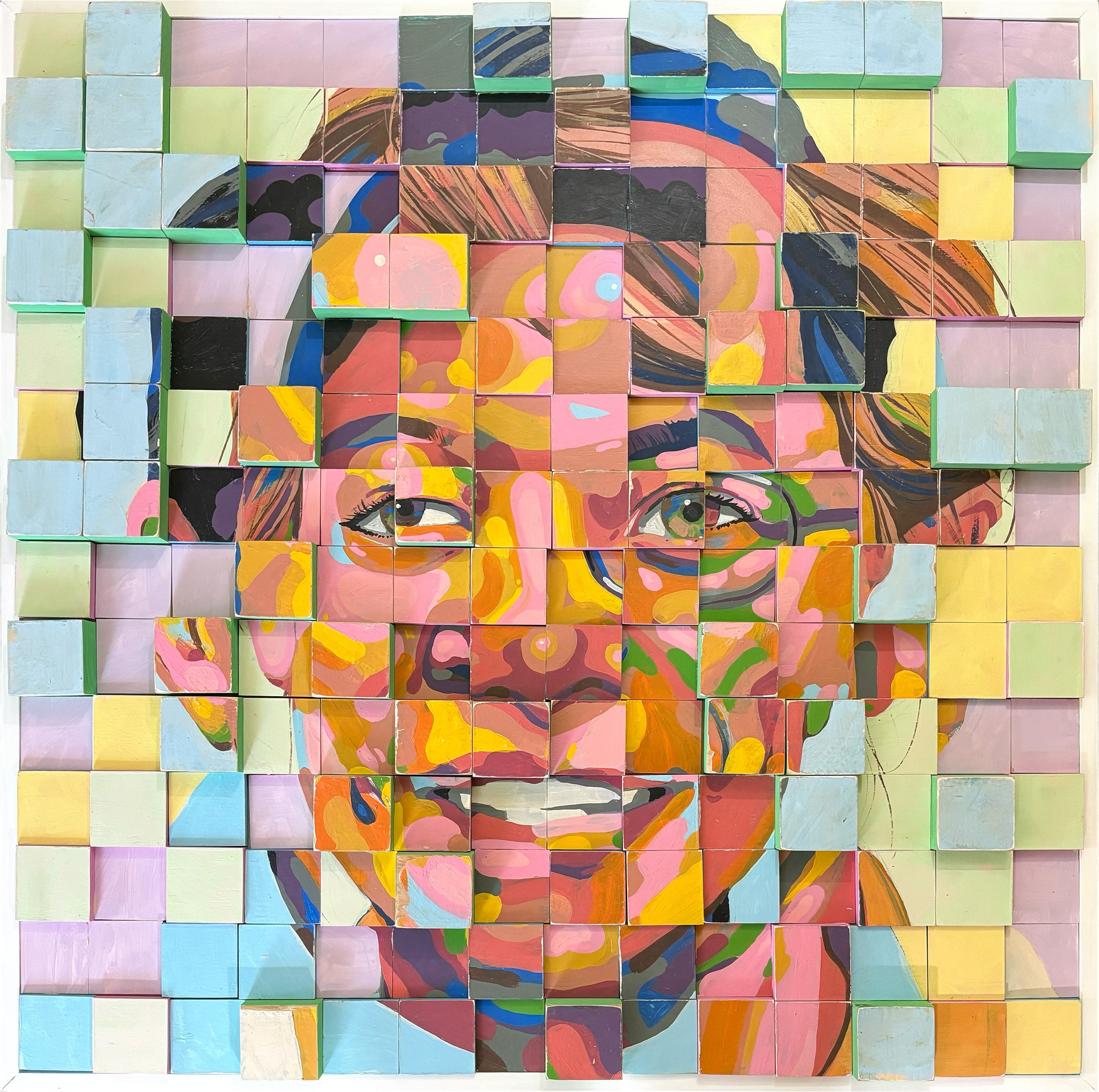Generator A - 2024, 48x48,” Acrylic and tempera on plywood and pine
Portraits of People That Don’t Exist
Artist Stephen Haynes in his home studio with some of his over 500 Portraits of People That Don't Exist.
In 2020, artist Stephen Haynes began making small oil sketches based on images produced by the website, thispersondoesnotexist.com. Leveraging StyleGAN, a machine learning AI, the website crafts singular, realistic-looking snapshots of faces. Drawing upon a vast dataset, the website can produce an infinite supply of authentic looking images with every refresh of the browser window.
After several years producing over 1,000 images, Haynes began thinking more broadly about AI and its ability to create enormous amounts of imagery. What had taken the artist many months to produce could, in theory, take an AI model minutes, or hours, given the proper dataset. This stark asymmetry in productivity prompted Haynes to explore the implications and nuances of human-made artistry within an environment increasingly inundated with artificially generated imagery.
Seeking to encapsulate the essence of these artificially generated images and the dynamics of his interaction with them, Haynes embarked on the creation of four mixed media pieces. Each artwork was meticulously crafted from four distinct portraits, analogously akin to assembling a curated "dataset." Within each of these "datasets," 196 individual 3x3” squares emerged, each painted on one of four depths of substrate ranging from 1⁄4'' to 1-½.”
The resultant final compositions, titled "Generator (A-D)," present a compelling amalgamation of disparate yet interconnected elements. Through the arrangement of these "dataset" images, Haynes orchestrates not only a visual mosaic of diverse portraits but also an undulating topography, courtesy of the varied depths of substrate. The images strive to evoke the semblance of a human countenance, inviting viewers to discern familiar features while tantalizingly withholding absolute clarity, much like the pixel-building process of AI models.
The labor-intensive process of planning, cutting, painting, and assembling yields images that teeter on the edge of recognition, evoking a sense of tantalizing ambiguity. Despite their roots in AI-derived imagery, these artworks remain resolutely analog, celebrating imperfection and tactility. Through "Portraits of People That Don’t Exist," Stephen Haynes invites audiences to ponder the interplay between technology and traditional artistry, and to contemplate the elusive nature of identity and perception in an increasingly digitized world.

























